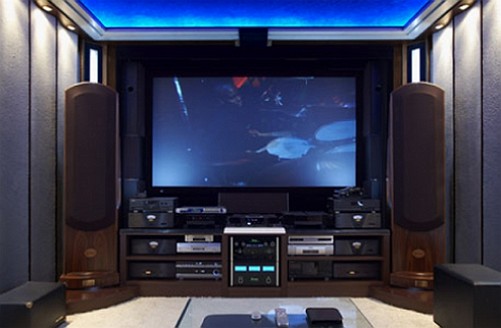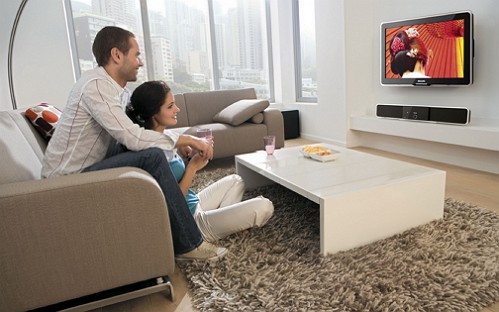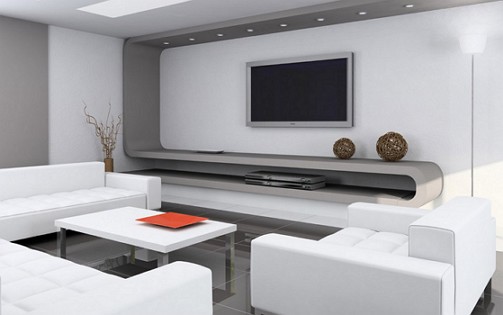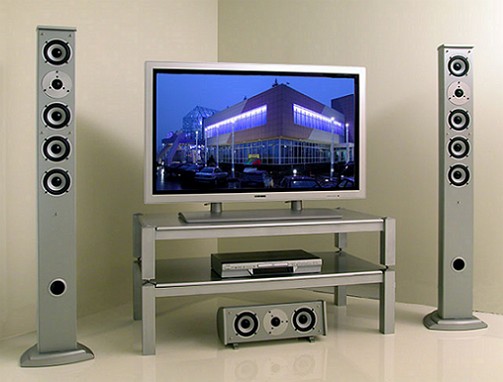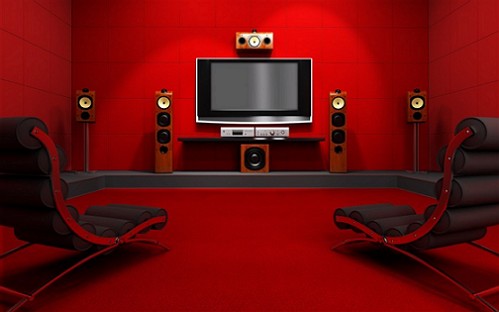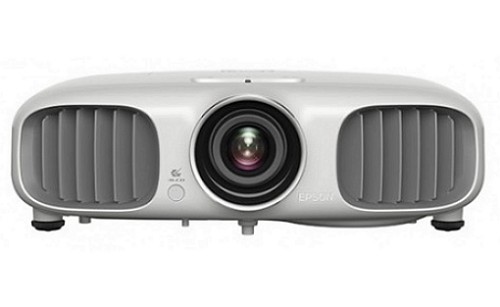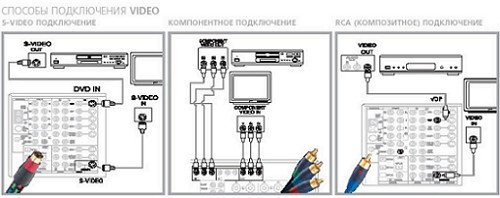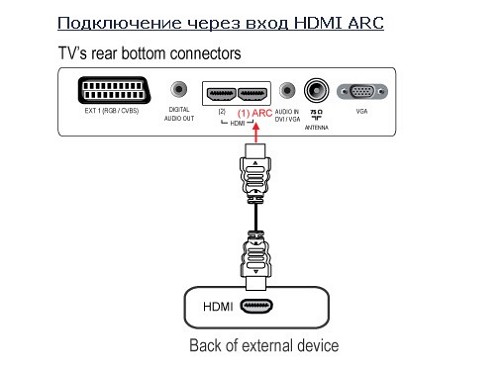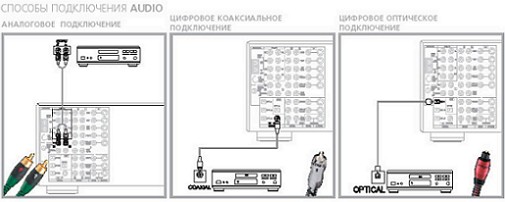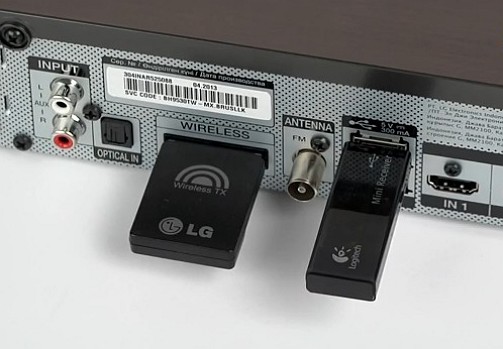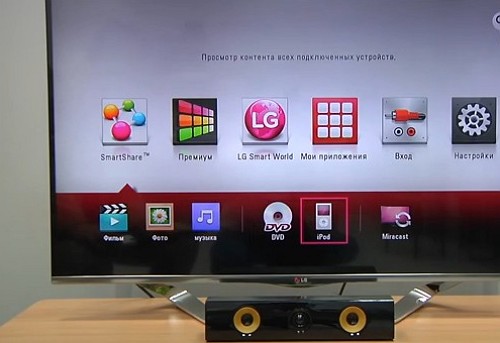When we visit the cinema, we are always fascinated by a peculiar atmosphere. Of course, this is a well thought out interior, high-quality reproduction of the film, as well as purity and power of sound. In a natural way, there is a desire to arrange something similar at home. The best home theater helps to create a home cinema atmosphere.
Content
What are the parameters of a home theater system
By analogy with this movie theater, a home theater must have a minimal hardware configuration for optimal viewing conditions or as such a configuration is called - Format 5.1. This is a five-channel home theater system.
The main parameters of the cinema are electronic components:
• high-quality equipment for video playback (video system)
• screen or plasma panel for viewing
• multi-channel sound system (acoustic system)
• Noise-resistant interface equipment
• a specially equipped room.
In which room is better to install a home theater
For the arrangement of a premise under a cinema it is preferable to allocate a separate room. It is desirable that the room was equipped with a single door equipped with a special lock, which cuts out the sources of noise. The shape of the room has a significant influence on correct and undistorted sound reproduction. It is not recommended to use a cubic or square room, as well as rooms with multiple lengths of walls.
The complex unbalanced shape of the walls of a room with a semicircular window on one wall is not an option for correct undistorted reproduction of the sound signal from the sound equipment. Modern acoustic systems are calculated taking into account the harmonics of sound distribution.
Location of the home theater in the room
The ideal location of the cinema is the central place in the room. Therefore, as expected, in cinemas, a video monitor and three front loudspeakers are located at one wall, and seats for spectators at the opposite wall. It is better to place the spectators not near the wall, but at a short distance.
The optimal distance between the video playback device and the viewer is determined by the size of the video. The best is the distance at which the lines of the bitmap are not visible.
Having chosen places for the video monitor, you need to think about placing the remaining components of the cinema:
• DVD player
• VCR
• A / V Receiver
The best place of accommodation are special rack stands.
Cinema Acoustic System
Agree that any home theater is inconceivable without a powerful speaker system (AU).
For systems of format 5.1 distinguish classical and dipole acoustic system. With a classic speaker, the speakers are placed and pointing towards the viewer.
With a dipole speaker, the speakers are positioned behind the viewing area or embedded in the ceiling system.
Modern acoustic systems have already 9.1 - channel sound.
Vertical channels (4 pieces) are added to the traditional and already familiar 5.1 channel system. Such an expanded sound field now has a multidirectional sound, almost like in a cinema hall.
Projector for cinema at home
Home theater is impossible without high-quality equipment for video playback. Any projector for a home theater should have:
• Resolution
• Brightness
• Contrast
• Color Brightness
• Scaling the projected image.
An affordable projector for DC is the Full HD 3D projector Epson, developed on LCD technology: 3 x 0.74 "P-Si TFT. Impressive brightness and color brightness of 2000 lm., Contrast of 20000: 1 allow not to obscure the room to view the 3D image in
home 3d cinema.
Home Cinema Cables
An unchanging component when connecting components of the cinema are the connecting cables. Selection of cables is the most important issue when choosing. Any cable must accurately and correctly interface with all components of the system, transmitting audio and video signals without distortion and loss of information.
Cables for the home theater system are divided into:
• assignment (for audio or video)
• type (digital or analog)
• constructive (material of manufacture, dimensions, connector).
The main purpose and type of cable determines its place in the AV system. Conditionally, the cables are divided into interblock and acoustic.
Inter-unit cables for AUDIO and VIDEO system equipment connect the electronics units. Inter-unit cables transmit low-level signals.
The acoustic cable transfers the amplified signal from the amplifier or receiver unit to the speaker speaker. For these purposes, it is necessary to choose a powerful wire (two-wire line) with a considerable section of fixed length.
The following cable types are available:
for AUDIO signals
• signal audios (pair cable with RCA connector)
• Subwoofer (single cable, standard RCA connector)
• digital coaxial audio (single cable with RCA connector).
for VIDEO signals
• Analog (RGB-video)
• Component (Y / Cb / Cr)
• Composite
• SCART (eurocable with 21 pin connector). Provides the transmission of control signals, stereo sound and three video signals.
The abundance of wires and connectors of the home theater is always shocking.
Therefore, the question: "How to connect a home theater" is best to provide a specialist or purchase a wireless DC.
Wireless Home Cinema
And, finally, the embodiment of dreams are wireless home theaters. A distinctive feature of these cinemas is a comfortable two-way information exchange with components of the system equipped with powerful Wi-Fi support.
Home theater LG Blu-ray can now be connected to the PC or to existing digital devices that have the DLNA certificate. Streaming two-way data transmission over the perfect wireless technology Wi-Fi Direct ™ provides full access to film libraries, music libraries from digital libraries.
Now we do not need complex systems of conjugation of video and audio signals. The best home theater will do this from your smartphone directly to the TV.



